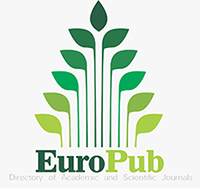Role of Immunohistochemical Anti-Rage Antibody in Lepidic Pattern Lung Adenocarcinomas
Role of Anti-Rage Antibody in Lung Adenocarcinomas
DOI:
https://doi.org/10.5281/zenodo.7716241Keywords:
Lung, Adenocarcinoma, Immunohistochemistry, RAGEAbstract
Introduction: Lung cancer remains the leading cause of cancer-related death worldwide. Adenocarcinoma is the most common subtype of non‐small cell lung cancer. The lepidic pattern is the subtype of lung adenocarcinoma growing along the alveolar surface. The receptor for advanced glycation end products (RAGE) is a transmembrane receptor in the immunoglobulin gene superfamily and is expressed in pulmonary AT-I epithelial cells. High-level expression of RAGE is involved in the pathogenesis of many pulmonary diseases, primarily through pro-oxidative and pro-inflammatory mechanisms.
Material and Method: Thirty-two patients diagnosed with lepidic pattern lung adenocarcinoma from lung resection and lobectomy materials were included in the study. The staining pattern of the adenocarcinoma area and adjacent normal lung tissue on the same slide were compared.
Results: While strong membranous staining was observed in normal alveolar structures around the tumor with immunohistochemical Anti-Rage antibody in all patients, significant loss of staining was observed in all patterns in adenocarcinoma areas. In addition, the effectiveness of the Anti-Rage immunohistochemical marker has been demonstrated in the evaluation of tumor size, pleural invasion, and spread of the tumor within the air spaces, which affect the stage and prognosis of lung cancer.
Conclusion: Anti-Rage antibodies can be used as an auxiliary method in the diagnosis of lung adenocarcinoma and the identification of prognostic factors. However, it may be useful to demonstrate the role of Anti-Rage immunohistochemical staining in reactive changes after fibrosis or inflammation with large case studies.
Downloads
Downloads
Published
How to Cite
Issue
Section
License
Copyright (c) 2023 Chronicles of Precision Medical Researchers

This work is licensed under a Creative Commons Attribution-NonCommercial-ShareAlike 4.0 International License.






